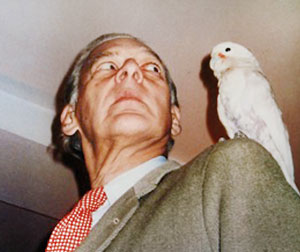“If it—learning to live—remains to be done, it can only happen between life and death. Neither in life nor in death alone. What happens between two, and between all the “two’s” one likes, such as between life and death, can only maintain itself with some ghost, can only talk with or about some ghost.”
(Jacques Derrida: Specters of Marx. Tran. Peggy Kamuf. Routledge: London, 1994).
Responding to the fantastic tale of the "dark wife" brought to England from colonial Ceylon by an Englishman in the nineteenth century- as told to our narrator with a mixture of terror, humour and a sense of the absurd by the avuncular ghost of the Reverend Halliday - the author of The Last Colonial says: “ I might have relished such a tall tale told to me in Sri Lanka, India, or some other eastern country, but here I was, in the heart of England, hearing the story from a long-dead English clergyman.” Of course, we assume that ghosts always tell the truth simply because they are “ghosts” – in this case a very particular ghost of a clergyman appearing in the familiar domain of a stately English gothic home.
But that truth (about the ghost, told by the ghost)- as the English/Danish Hamlet dramatises so powerfully - has more to do with that thin boundary between the waking world and the unconscious, a kind of phantasmic trigger that awakens desires and dreams long buried than with a real shadow reawakened from the depths of purgatory. Christopher Ondaatje's perplexity then, like Hamlet’s, is not only about the veracity of the ghost but also about the impulse behind the tale he tells. "Could it be true?" he asks - and "in England," the heart of the Empire?
 |
Embedding two tales—the narrator’s and the ghost’s—in this manner simultaneously marks boundaries and erases them. Location is important here—both in terms of a geographical imagination—England, Canada, Sri Lanka, Sind, but location in terms of what Jacques Derrida, calls “in between”, by the “neither in life nor in death alone,” signaled in the epigraph quoted above. Talking “to” or “about” a ghost involves a form of truth-making that requires this reciprocity, and a figurative torque that sustains the energy of the stories.
Out of this is born a narrative that lingers like Conrad's foggy skies over the landscape, with a luminosity that materializes in encounters with the unexpected-- spectral presences that punctuate the story from the very beginning--from when an old friend appears in a Toronto taxi, to the Victorian explorer Richard Burton’s manuscript about human sacrifice that appears only to remain unread, its secret carefully locked away in the safe of the Board of Deputies of British Jews in London; from the story of the curse of the she devil appearing as leopard in The Man-eater of Punanai to the sight of the white crow and the story of devilry, metamorphosis and local witchcraft narrated by none other than the then President of the Republic of Sri Lanka; from the triumphalist story of Olympic Victory (Ondaatje was a member of the 1964 Canadian bobsledding team) to the story of The Blue Nude, a painting by Justin Deraniyagala of Anais Nin, that leads to the remarkable story of twinship of these figures from the early twentieth century modernist art, both subjects and objects in Ondaatje's imagination.
Avuncular or not, the ghost of Glenthorne that literally materializes only in the concluding pages of The Last Colonial has been reaching out to the reader from the very beginning, gently nudging at times, a bit more insistent in other places, throwing us into the loops and swings of a surreal trapeze performance. These swings shape themselves as new cartographies of the dying colonial order—the vanishing world—appear, dynamically crafted in the shifting texture of images and after-images of the past/present, of auras and pin points, backward and side glances, linking and delinking the singular parts of the book to its whole.
The worlds of private dreams and national myths come together on its pages of narration as well as in the images produced by Ana Maria Pacheco. Told through a punctuated form—of appearances and disappearance, it takes us to the world of the half human woman from the “past,” and to the hunt for the clues left by the pug marks left on the muddy ground of England, the very England that is the site of the narrator’s memories of school, of growing up, of social mobility and survival in an unmoored world that is both new and foreign.
This book retraces—with a kind of intuitive glee-- life lived simultaneously in the heart of the Empire and its edges, where the vagaries of chance and risk unfold in patterns of memory and are told through stories of travel, exploration, enterprise, and chance meetings that are themselves framed by larger narratives of exile and displacement, and of loss and recovery, often interspersed with stories of the seductions of gossip caught in the half light of the midnight moon. That is the magic and mystery of The Last Colonial - its entrancing ghostliness.
(The reviewer is Professor of English, Colby College, Maine) |


